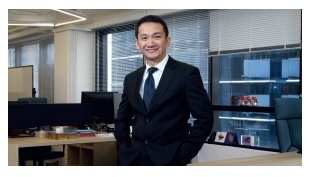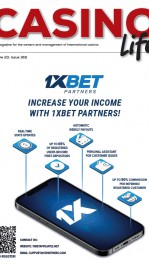From Autopilot to Co-Pilot. By Raymond Chan
Think of AI as a supersmart helper that can do amazing things for your business. It can handle tasks quickly, learn from data and even make some decisions. But just like a train needs a driver, AI needs people to set the tracks. When we build tools that let us control AI, we can use it to make our businesses stronger and ready for anything.
Why Human Control of AI Matters
Artificial intelligence is a powerful engine — it can take us to amazing places but we need to steer it in the right direction. The goal of using AI isn’t to let it take over but rather to harness its abilities to improve our lives.
For instance, think about self-driving cars. These AI-powered vehicles aren’t just about cutting-edge technology; they’re about giving us the freedom to use our time in the car for work, relaxation or enjoyment, rather than focusing on the road. Let’s consider another example from the creative world of cinema. AI can analyze countless scripts and performances to provide fresh inspiration for movie directors, helping them to dream up new stories, and create unique experiences for their audience. It’s not about AI writing the next blockbuster on its own but about sparking the imagination of talented humans.
However, it’s crucial that we don’t let AI run without a sense of direction. Unchecked, AI might make choices that don’t truly benefit people. It might optimize for efficiency or profit but miss out
on what we really value, like community, fairness or environmental sustainability. Just like any powerful tool, we want to make sure it’s used for good and not exploited by those with harmful intentions. That's why the owners and operators of AI — be they businesses, governments or individuals — need to have a say in how AI systems serve us. They need to set boundaries and rules to ensure that AI’s immense capabilities are not misused. This is where the development of tools to maintain control over AI comes into play.
on what we really value, like community, fairness or environmental sustainability. Just like any powerful tool, we want to make sure it’s used for good and not exploited by those with harmful intentions. That's why the owners and operators of AI — be they businesses, governments or individuals — need to have a say in how AI systems serve us. They need to set boundaries and rules to ensure that AI’s immense capabilities are not misused. This is where the development of tools to maintain control over AI comes into play.
Crafting the Tools for Human-AI Synergy
In the burgeoning era of AI, constructing the right tools for human-AI interaction is not just a luxury, it’s a necessity. These tools are dual-natured, encompassing both human interaction and AI reflection. Their design is complex and demands careful thought, but the investment is imperative as AI becomes an integral part of business operations.
The Human Interaction Piece: This is the interface that serves as a bridge between humans and machines. It’s how we communicate our needs, instructions and feedback to AI. These interfaces can take various forms, depending on the context and the users involved. Some might be text-based, where users type commands or queries and receive written responses. Others might be voice-activated, allowing for a more natural, conversational flow of information. And in some cases, particularly where nuanced or complex physical tasks are involved, motion capture and gesture recognition might come into play, translating human movements into digital commands. The key to designing these interfaces is to make them intuitive and accessible. They should require minimal training to use effectively, allowing people from different backgrounds and with various levels of technical expertise to interact with AI seamlessly.
The AI Reflection Piece: While communication is critical, it’s equally important for humans to understand how AI makes decisions. This transparency allows for the early detection of potential issues before they escalate into significant problems. The AI reflection piece comprises tools that monitor AI’s decision-making processes, providing insights into the ‘why’ and ‘how’ behind its actions. These tools can include dashboards that visualize AI’s thought processes, logging systems that track decision making over time and alert mechanisms that notify humans when AI encounters uncertain scenarios or when its actions deviate from expected patterns.
Designing these systems for reflection is challenging because AI’s decision making can be highly complex and not always easily translated into human-understandable terms. This is especially true for AI systems that use machine learning and deep learning, where decisions are made based on vast amounts of data and intricate algorithms.
Nonetheless, the effort to create these tools is crucial. They serve as the checks and balances in the AI-human partnership, enabling businesses to maintain control, ensure accountability, and uphold ethical standards. As we embrace the AI era, which has indeed arrived, dedicating resources to the development of these tools is not just a recommendation — it’s an essential strategy for any forward-thinking business.

ABOUT RAYMOND CHAN
Raymond is a software engineer by profession with a track record in corporate innovation and entrepreneurship. He co-founded two prosperous startups, TGG Interactive and Global Gaming Group in Asia, where he served as director and CEO to lead the customer intelligence and electronic gaming businesses from 2007 to 2018. Earlier in his career, Raymond was a founding member of the business intelligence team at E*TRADE from Morgan Stanley and played a pivotal role in designing the TiVo customer intelligence system in Silicon Valley.
Raymond is a software engineer by profession with a track record in corporate innovation and entrepreneurship. He co-founded two prosperous startups, TGG Interactive and Global Gaming Group in Asia, where he served as director and CEO to lead the customer intelligence and electronic gaming businesses from 2007 to 2018. Earlier in his career, Raymond was a founding member of the business intelligence team at E*TRADE from Morgan Stanley and played a pivotal role in designing the TiVo customer intelligence system in Silicon Valley.
*** This exclusive feature interview was originally published in April 2024 edition of Casino Life Magazine Issue 165 ***
Category:






























